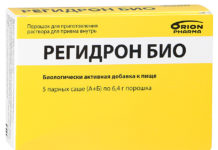Despite the fact that the use of calendula is relevant in many areas of human life, the flower has received a special demand as a medicinal raw material. Everyone can take advantage of the unique healing qualities of the plant. The main thing is to take into account the medicinal properties and contraindications of calendula.
Material Content:
The healing properties of flowers, calendula leaves
People call calendula marigolds. This is a beautiful plant, with juicy and strong stems, elongated leaves and attractive flowers similar to chamomile.
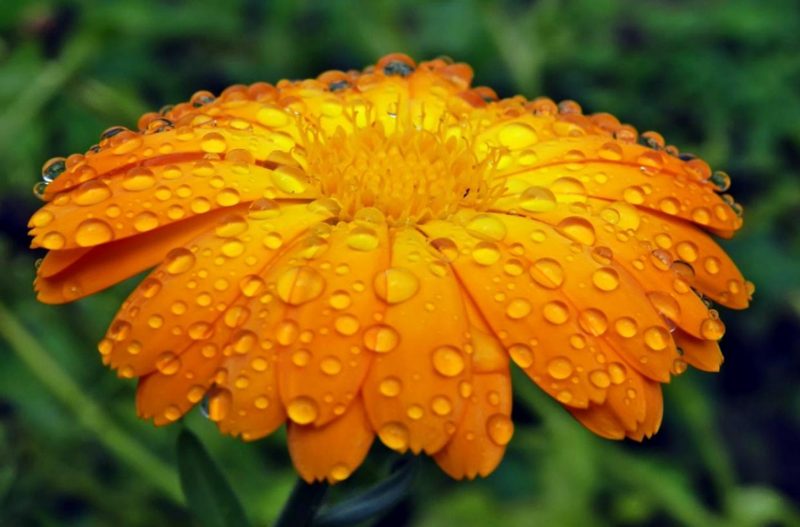
Unlike many other medicinal plants, calendula has a bright “appearance” - the juicy yellow and orange petals of its inflorescences not only attract attention, but also raise the mood.
Ancient healers believed that one glance at a blossoming calendula is enough to forget about sorrows, and at the same time, to improve sight.
The flowers of the plant really have this ability, due to the content of carotene, from which vitamin A is synthesized in the body. Just to achieve a therapeutic effect, it is not enough just to admire the beauty of the flower, an internal intake of funds prepared on the basis of its inflorescences is necessary. And the orange color itself has the ability to stimulate the nervous system and is used in color therapy to eliminate depression and nervous fatigue.
But this amazing healing properties of calendula are not limited.Almost all the ground parts of the marigolds are rich in valuable elements, the effect of which helps in the fight against various diseases.
The pharmacological value of marigolds
The most pronounced healing power is possessed by calendula flowers.
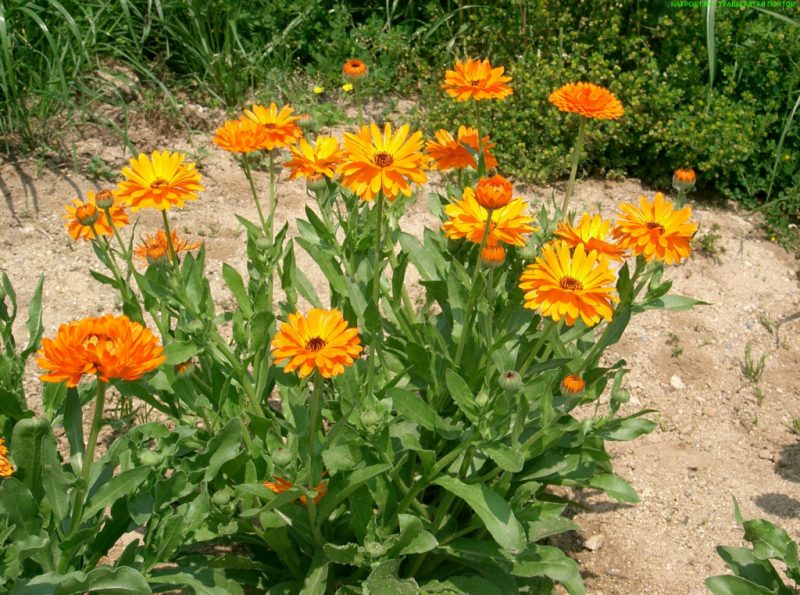
Flower baskets contain a huge amount of such substances:
- Carotenoids - organic natural pigments that neutralize the action of free radicals. Especially valuable representatives of the class are considered provitamins A - precursors of vitamin A.
- Flavonoids - plant organic compounds that have an antispasmodic, healing, choleretic and diuretic effect.
- Triterpenoids - acid-containing organic compounds that provide anti-inflammatory effects, improve the conductivity of nerve impulses and lower cholesterol.
- Sterols - organic substances, derivatives of steroids, which neutralize the action of cholesterol and lower its level in the blood.
- Essential oils that suppress the vital activity of pathogenic microorganisms.
- Salicylic acid is a compound with pronounced antiseptic, analgesic, anti-rheumatic and anti-inflammatory properties.
- Coumarins - substances whose pharmacological activity is expressed in antispasmodic, antitumor and anticoagulant effects.
In addition, marigold inflorescences are rich in microelements such as:
- potassium and magnesium, supporting the work of the heart muscle;
- iron and calcium, necessary for normal blood formation;
- immunity-boosting zinc;
- copper for stopping inflammatory processes;
- molybdenum, preventing the demineralization of tooth enamel;
- as well as selenium, which does not allow the formation of atypical cells.
The stems and leaves of calendula contain volatile, thanks to which the plant can be used as an antibacterial agent, and tannins. And marigold seeds are used to make fatty oils.
Calendula: Benefits for Women
The unique set of medical capabilities that calendula has has made this plant an indispensable component of the procedures for healing the female body.

And it is especially relevant in the elimination of gynecological problems.
On the basis of calendula, drugs are prepared for the treatment of tumors and ovarian cysts, fibroids and erosion of the cervix, as well as seals and tumor processes in the chest. In addition, the use of drugs from marigolds helps to reduce uterine tone, normalize the course and frequency of menstruation, and improve the well-being of a woman during menopause.
What diseases does it help?
The bactericidal, wound healing, anti-inflammatory, sedative, and analgesic properties of calendula have been used in the treatment of a huge number of diseases.
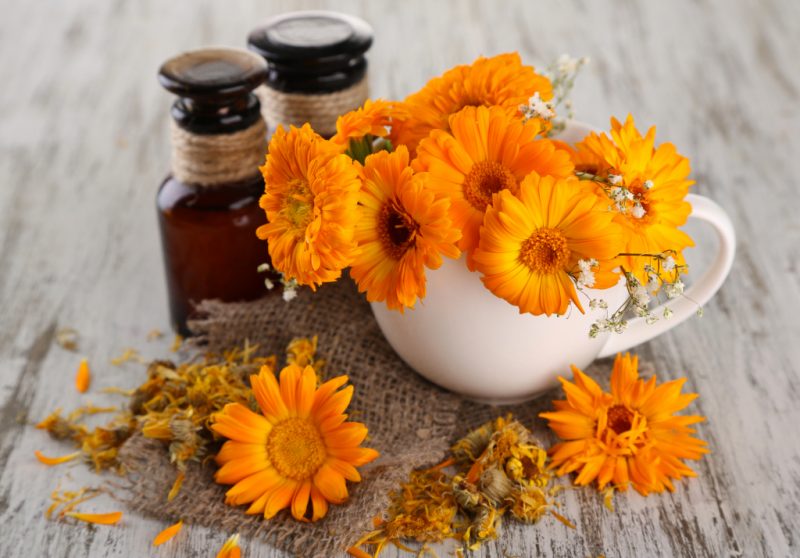
Calendula treatment is indicated for the development of most pathological processes that threaten human health:
- diseases of the digestive tract and hepatobiliary system - gastritis, ulcers, colitis, duodenitis, hepatitis, jaundice, constipation, cholecystitis, enteritis, hemorrhoids;
- skin lesions - boils, dermatomycoses, acne, warts, wounds, bruises, gangrene and necrosis;
- nervous and cardiovascular systems - nervous excitability, dizziness, hypertension, tachycardia, arrhythmia, heart failure;
- diseases of ENT organs caused by the activity of staphylococci and streptococci - tonsillitis, tonsillitis, pharyngitis;
- dental diseases - periodontitis, stomatitis, gingivitis, periodontal disease, bleeding gums;
- infections and inflammation of the kidneys and urogenital organs - nephritis, cystitis, thrush, trichomoniasis;
- lesions of the respiratory tract - asthma, bronchitis.
In addition, calendula helps to relieve symptoms and improve the well-being of the patient with influenza, allergies, rickets, arthritis, rheumatism, enlarged spleen, cancer, malaria, as well as toxicosis (especially early).
Folk marigold recipes
In the recipes of traditional medicine, all the ground parts of the marigolds are used in the form of decoctions, tinctures, ointments, oils, juice, tea and infusions. On the basis of calendula products, compresses, rinses and douching are made, medicinal drinks and bath solutions are prepared.
Collection rules
In natural conditions, calendula blooms throughout the entire warm season, therefore, the collection of inflorescences is made many times per season. Moreover, after each collection of baskets, the flowering of the plant becomes more intense, and the number of flowers increases.
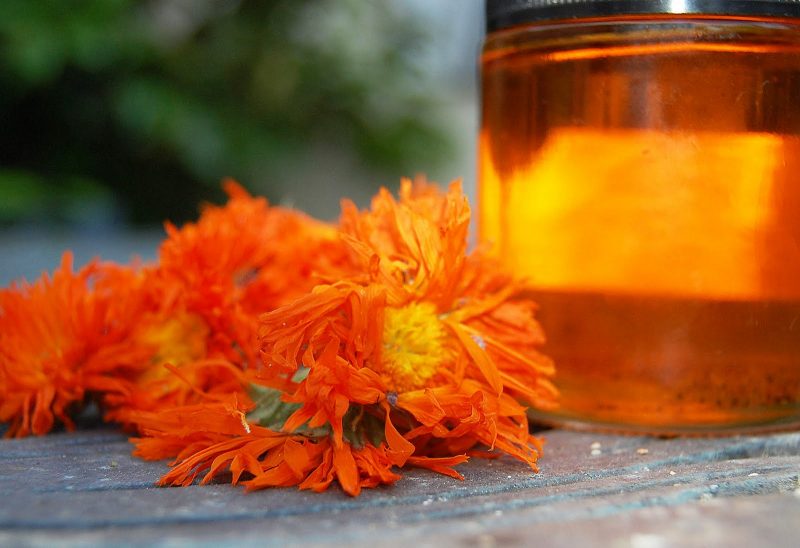
Collect baskets of inflorescences along with a peduncle. The greatest pharmacological value are buds in the first two days after blooming. The collected plant material is dried in ventilated areas, protected from direct sunlight.
Dried calendula flowers retain their healing properties for several years, provided that they are stored in glassware and in a dark place.
Infusion or decoction
To prepare the infusion, calendula is poured with boiling water - one or two glasses of water is taken for one tablespoon of plant material. Then wrap or place in a thermos until completely cooled. As they are insisted, the valuable substances of calendula will pass into the water, endowing it with healing power.
More materials:tincture of calendula
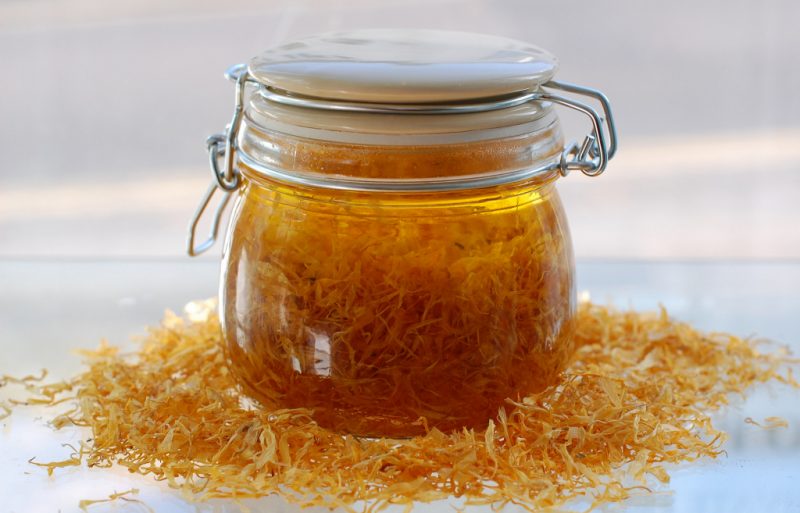
After filtering, such infusions are used internally with:
- diseases of the liver and biliary tract;
- gastritis;
- menstrual cramps;
- high blood pressure;
- as well as insomnia and anxiety.
For diseases of the cardiovascular system, the same amount of brewed lemon balm, valerian, hawthorn or dog rose can be added to the finished infusion. Several tablespoons of cranberry juice increase the healing effect.
With influenza, several crushed cloves of garlic should be added to the decoction of calendula. And when coughing, it is recommended to drink half a glass of warm broth several times a day.
For oral administration, it is recommended to use two tablespoons of the infusion three times a day. But with inflammatory diseases of the urinary tract, the use of the indicated dose of infusion is performed every 20 minutes.
An infusion made from two glasses of water is considered less saturated and is suitable for rinsing the throat and mouth, performing enemas and soaking tampons while eliminating problems of a gynecological nature.
Calendula Ointment
Ointment based on calendula extract is a powerful bactericidal and anti-inflammatory agent that can quickly heal wounds, eliminate rashes, skin irritations and destroy pathogenic microorganisms that provoke its defeat.
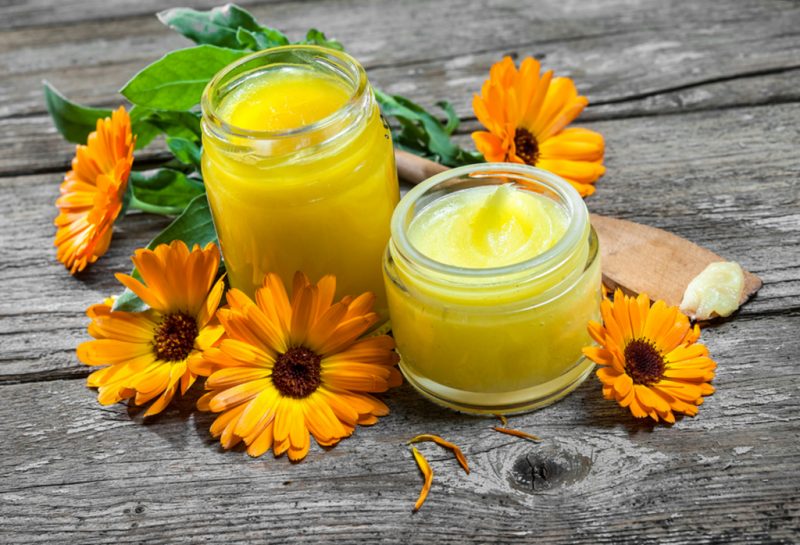
Recipe No. 1. For the preparation of marigold ointment, 100 grams of dried inflorescences are crushed and mixed with 200 g of melted pork fat. The resulting mixture is heated in a water bath until uniform. Then cool and spread in a glass dish. Store in the cold.
Recipe No. 2. Three tablespoons of dried calendula inflorescences are poured with boiling water and kept warm for about two hours. Then the infusion is filtered and mixed with one tablespoon of petroleum jelly.
Calendula ointment is used externally to treat problem areas of the skin.
To eliminate warts, the ointment should be prepared from freshly collected raw materials with the addition of a small amount of celandine juice.
Marigold oil
For the treatment of various diseases, the use of calendula oil is also recommended - an effective tool that provides bactericidal, disinfectant, anti-inflammatory, antiviral and general strengthening effect.

Marigolds fill a half-liter jar with fresh flowers, not reaching the top edge of two centimeters. Then the contents are supplemented with vegetable oil - olive or sunflower. The oil is considered ready after 10 days, subject to storage in a cold place. During the period of insisting, it is recommended to shake it periodically.
External use of marigold oil is appropriate for:
- burns and frostbite;
- ulcerative skin lesions with varicose veins;
- dry eczema;
- the appearance of diaper rash in infants;
- wounds, cuts, bruises and bruises;
- nipple cracks in nursing mothers;
- pressure sores.
The internal intake of calendula oil is indicated for diseases of the digestive system, including erosive formations and ulcers, as well as for menopause and increased nervous excitability.
The recommended dose is a tablespoon of oil twice a day half an hour before a meal.
Calendula oil is also used as a means of strengthening the immune system. They are seasoned with salads, added to sauces, soups or prepared dishes. In the cold season, oil is applied to the skin to protect against the effects of low temperatures.
Juice, tea
Juice squeezed from fresh marigold flowers is a universal remedy for restoring health in the common cold, bee or wasp stings, inflammation of the rectum, angina pectoris and hypertension, gastritis, and peptic ulcer of the stomach and intestines.

To prepare the juice, freshly picked marigold inflorescences are crushed using a meat grinder or blender and squeezed through a press or cheesecloth. For long-term storage, the juice is sterilized for about an hour in a water bath.
- For internal use, one or two tablespoons of juice mixed with honey or milk, twice a day.
- For external use, the juice from the marigolds is diluted with boiled water: the ratio for rinsing is 1: 2, the ratio for douching and enemas is 1: 3.
- To make tea, the nails are combined with the same amount of linden blossom and mint or chamomile. For one tablespoon of the mixture - a glass of boiling water. Brewing time - 20 minutes in a warm place.
Such tea is effective in the presence of any indications for the use of calendula, as well as as a general strengthening agent.
Alcohol tincture
To prepare a tincture of marigolds, you will need alcohol and vegetable raw materials (preferably freshly picked). Thanks to the action of alcohol, only all the valuable qualities of fresh calendula are preserved only in tincture.
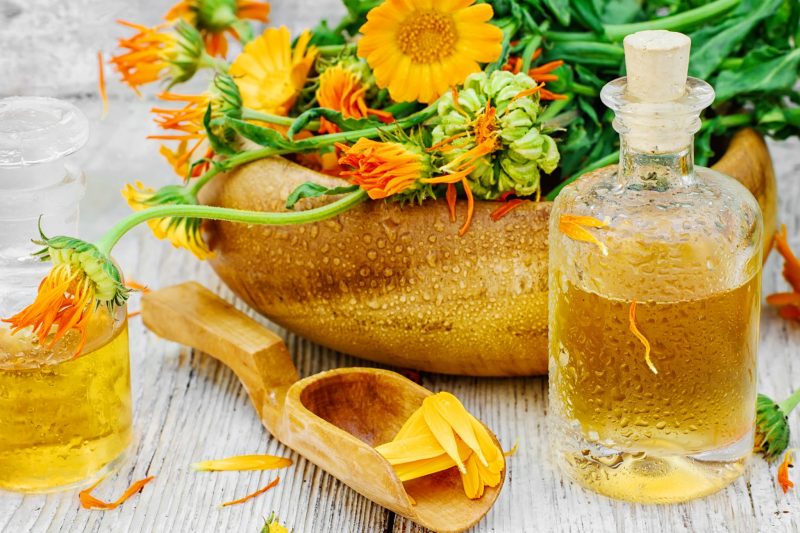
In the preparation of tinctures, the following algorithm is observed:
- Calendula inflorescences are filled with alcohol.
- The correct ratio is one part of plant material and five parts of alcohol with a strength of 70%. An alternative is a tablespoon of chopped marigold flowers for one glass of vodka.
- The mixture is put in a cold place and incubated for two days.
- Tincture is filtered and stored in cold and dark, because light and heat destroy the biologically active elements of calendula.
The use of tincture in its pure form is not recommended, it is necessary to dilute the product in water. The optimal ratio is a glass of water and a teaspoon of calendula alcohol solution.
On the basis of the diluted preparation, compresses and rinses are made for skin lesions and fungal infections, pathologies of the throat and oral cavity, hair loss and dandruff.
As an internal remedy, tincture of calendula is taken 20 drops three times a day for hypertension, neurosis or insomnia, coughing attacks, as well as to enhance the output of bile and the expansion of bile ducts with stoneless cholecystitis.
Application in cosmetology
Solving cosmetic problems is another aspect of the use of the miraculous power of calendula. The rich chemical composition of the plant allows you to rejuvenate your skin and improve the health of your hair.
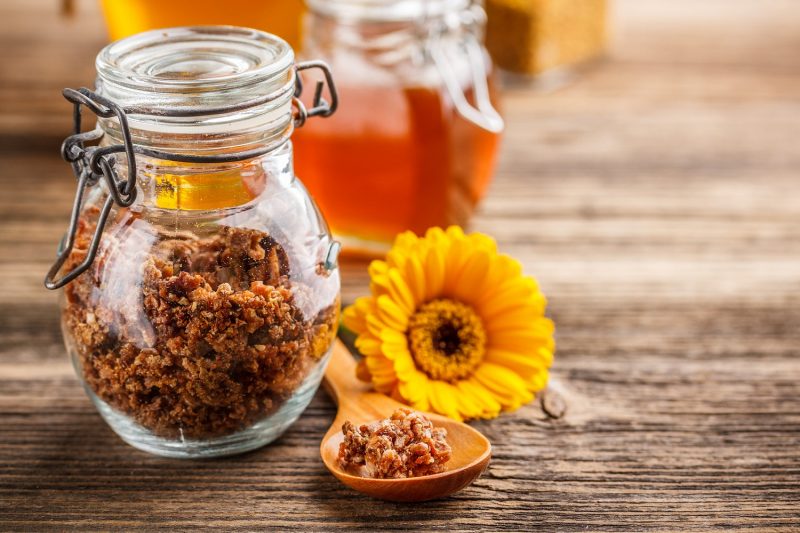
In addition to the fact that calendula products effectively eliminate such skin defects as rash and irritation, the use of the plant extract has a tonic, regenerating and whitening effect.
Therefore, calendula is shown for all types of facial skin as a basis for funds:
- tonic and toning;
- anti-aging;
- eliminating freckles, age spots, scars and scars;
- improving the color of the epidermis;
- relieving inflammation;
- triggering cell regeneration;
- reducing the depth and number of wrinkles;
- reducing fat levels;
- healing small scratches and wounds.
To eliminate skin problems, it is recommended to wipe the face daily with infusion of calendula flowers or make masks based on infusion of inflorescences.
And to restore the health of the hair, eliminate brittleness, prevent hair loss or accelerate growth, it is enough to periodically rinse them with a decoction of marigolds.
Calendula Pharmaceuticals
Calendula officinalis is a plant officially recognized by medicine as the basis for the production of pharmacological agents. The healing potential of marigolds has been embodied in many preparations.
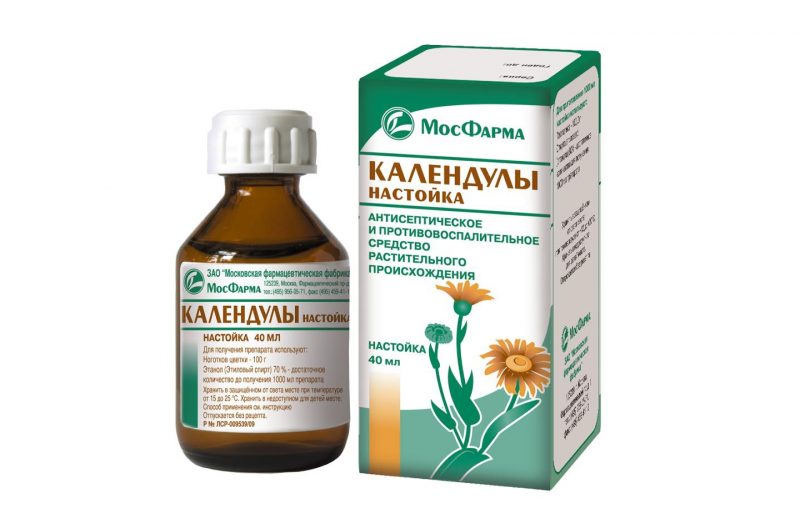
- Calendula tincture is a medicine for external and internal use. It is a yellow transparent liquid used for the preparation of a solution for rinsing, lotions, therapeutic enemas, instillation in the nose or ear, as well as internal administration for gastrointestinal diseases.
- KN tablets are a means for influencing tumor processes in the digestive tract.
- "Kaleflon" - tablets for the treatment of ulcerative formations in the stomach and intestines, chronic forms of gastritis and liver diseases.
- "Rotokan" is a liquid combination agent for the restoration of affected mucous membranes. It is indicated for diseases of the gastrointestinal tract and oral cavity.
- Dr. Taiss Calendula Ointment based on an extract of inflorescences, animal fat and corn oil. It is used externally to eliminate infectious and mechanical skin lesions.
As a rule, calendula pharmaceuticals are available over-the-counter. But this does not mean that treatment with marigolds has no contraindications.
Contraindications
So that the use of calendula-based products does not cause the development of undesirable reactions, it is necessary to take into account the specific effects of individual components of the plant.

Despite the low level of toxicity of marigolds, the restriction of taking funds based on them relate primarily to internal use.
Calendula treatment is not recommended for:
- the presence of individual intolerance and a tendency to allergies to plants of the family Asteraceae (chamomile, chrysanthemum);
- therapy of heart diseases with the use of glycosides that enhance the activity of the heart muscle;
- low blood pressure or a tendency to hypotension;
- gallstone disease - the action of a plant extract can cause the movement of stones and blockage of the ducts;
- pregnancy - taking a plant extract can lead to termination of pregnancy (an exception is the elimination of toxicosis in the early stages).
In addition, internal use of calendula is contraindicated in children under 12 years of age.
Given the small number of contraindications, calendula officinalis can be considered one of the most effective and affordable plants. Moreover, the cultivation of marigolds does not require effort, and for the purchase of drugs based on them does not need large sums of money.
And most importantly, an understanding of the healing properties of calendula is the key to health and a fulfilling life.







